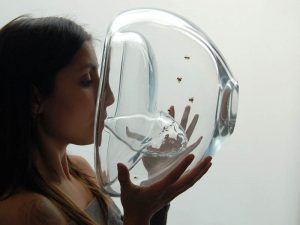Previously:
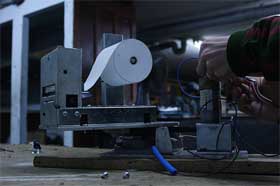 Life Inside Bubbles,
Life Inside Bubbles,
Emergentes – 10 projects by Latin American artists (part 1).
Back to the Emergentes exhibition which opened a week ago at LABoral center in Gijon, Spain.
Although electronic art from Latin America is not altogether unknown, there are still many largely invisible variations that are related to multidisciplinary research processes. (…) The installations are new or recently produced works focusing on the applications of science and technology with the intention of generating a dialogue with the social. There is no attempt to put forward an all-embracing or thematic view of art and technological production and its connection with Latin America. The goal is to shape the current partial image of what is defined as contemporary electronic art through a wide range of critical perspectives, both established and incipient.
The curator of the exhibition, José-Carlos Mariátegui, explained that he saw two main groups of media artists in the exhibition. A first group who investigates and follows a research process quite similar to the one you’d encounter in the scientific sphere, these artists are aware of the fact that they exhibit a project doesn’t mean that the research is not going further. The second group is also involved in exploration and speculation process but come up with a finished project, an artistic work with its own value.
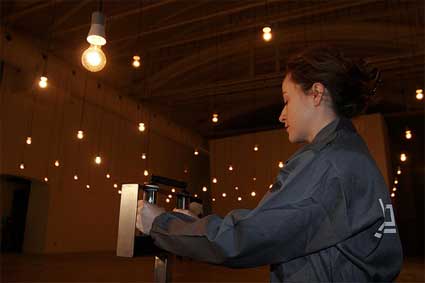 Image LABoral/Cárdenas
Image LABoral/Cárdenas
What makes the exhibition appealing is that most works have an undeniable aesthetic interest. Take Almacén de Corazonadas for example. Rafael Lozano-Hemmer‘s installation captures your pulse when you grab handles which work in a way similar what you find at the gym on the cardio training machines. After a few seconds the system has registered your heartbeat and activates the spotlight which starts to blink at the same rate as the heart. The person following you will leave the same imprint on the first bulb and your beating spotlight will be transfered to the second bulb, and so on. Until it reaches the last bulb then disappears.
I saw the work at the Mexican Pavilion of the Venice Biennale. It was amazing to see it work but that was it. Here because of the space the work has been given, it looks like a totally different installation. You can experience it as a participants, grabbing the handles and admiring the effect of that simple gesture or you can go upstairs and get a full view of the installation and in that case it even doesn’t matter whether you understand the system or not, the view of the flickering bulbs is enough.
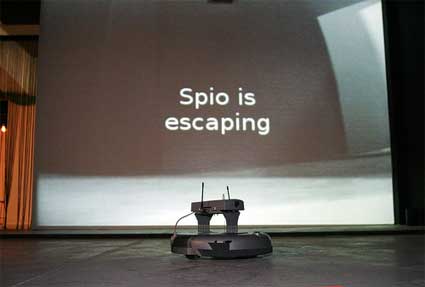 Image LABoral/Cárdenas
Image LABoral/Cárdenas
Spio is an homage to Nam June Paik. To create the installation, Lucas Bambozzi hacked a Roomba vacuum cleaner and turned it into a system that automatically captures, processes and transmits images.The robot digitally tracks the exhibition space generating sounds and images projected on two wals. Spio consists of highly sensitive closed-circuit cameras (CCTV) capable of processing real-time images. The installation system captures light and sound interferences, generated by the position of the robotic vacuum cleaner and the visitor’s presence, resulting in chaotic movements and unexpected turbulences in the image.
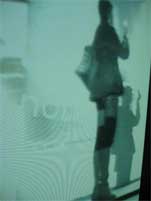
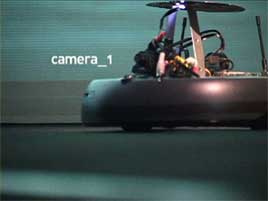
The work references of course our surveillance society where an objects that may look innocent could in fact become an eye that follows our every move.
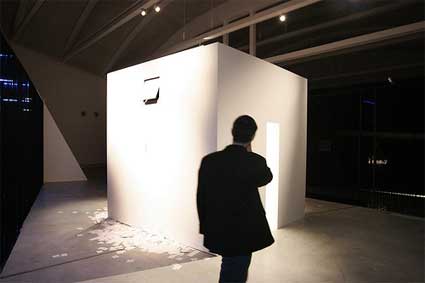 Image LABoral/Cárdenas
Image LABoral/Cárdenas
Ambiente de Estereo Realidad 4, by José Carlos Martinat and Enrique Mayorga, is a huge cube hiding three printing modules. A mechanical system opens small windows placed high up on the cube walls, it just throws tiny bits of printed paper. The flyers that land on the inside contains texts referring to a “You” whilst the texts referring to “Them” are flung outwards. An algorithm system creates Google search strings for sentences based on the keywords “debería” (she/he should) and “deberían” (they should). The installation manipulates the information in a very physical way, printing it and spitting it without second-thought. The information we are live on every day has also been manipulated in some form or another.
This work belongs to the series Ambientes de Estereo Realidad, a project aimed at reflecting on the purpose of household objects and on the digital and massively informed surrounding world.
Video uploaded by qaekous
The best quality of the show is that the pieces selected are easy to grasp and like. You can take them at face value and enjoy in their contemplation. On the other hand, if you’re into searching for depths, and layers of meanings to be un-peeled one after the other, the show works well too. Most of all, each work defies every mis-conception and preconception we might have about Latin America. Nothing in the way they look or work, nor in the topics they engage with would tell you that you’re in front of a work made by a Latin American artist.
I’ll come back with another post describing a couple of projects which i found more complex. In the meantime, here’s more images.
Emergentes is on view until May 12, 2008, at the LABoral art centre, in Gijon, Spain. After that the exhibition will tour in Latin America.

